 A pleasant castle town in the Kansai, few people would trouble to stop in Himeji if it were not for its magnificent citadel. Standing on a bluff dominating the city, the castle has all the grace of a white egret about to take off, which explains its well deserved sobriquet: Shirasagi, the ‘White Egret.’ Of Japan’s twelve surviving feudal castles, Himeji-jo is, arguably, the most impressive. As a symbol of militarism, it’s a wonder the castle was not obliterated during WWII. The rest of the town was. Its survival and dominance among Japanese fortresses must have impressed UNESCO, who added it to their World Heritage list in 1993.
A pleasant castle town in the Kansai, few people would trouble to stop in Himeji if it were not for its magnificent citadel. Standing on a bluff dominating the city, the castle has all the grace of a white egret about to take off, which explains its well deserved sobriquet: Shirasagi, the ‘White Egret.’ Of Japan’s twelve surviving feudal castles, Himeji-jo is, arguably, the most impressive. As a symbol of militarism, it’s a wonder the castle was not obliterated during WWII. The rest of the town was. Its survival and dominance among Japanese fortresses must have impressed UNESCO, who added it to their World Heritage list in 1993.
Himeji-jo is an all seasons venue, but spring, when the castle is ringed by cherry trees in full blossom, is the most popular time to visit. Like other castles in Japan, Himeji-jo rose from the core of an older fortification dating from the 14th century. Foundation stones near the present building, though, reveal that a castle existed in the town even before that. Generalissimo Hideyoshi enlarged the fortification in 1577, a project expanded by Ikeda Terumasa, a son-in-law of the first Tokugawa shogun. It’s complex of thick stone and plaster walls, moats, cusped gables, and connecting passageways date from this time
The funds for the final phase of building came from the dowry of Princess Sen, who got to have her own private retreat, the so-called “cosmetic tower,” where she could try on fresh kimonos and prepare her face in peace. The purpose of the castle itself seems to have been less defensive than to intimidate those feudal lords who persisted in challenging Tokugawa rule. By the time of its final construction, it was second only in scale to Osaka castle.
The castle never came under siege, benefiting from the long, relatively peaceful Tokugawa era. Openings in the donjon walls, called ishiotoshi, were designed to drench invaders with boiling water, oil and hot coals should they be unwise enough to try and scale the castle. Circular and rectangular holes bored through the walls, the former for bowmen, the latter for musketeers, represent the transition the era was experiencing from medieval to modern warfare. Another interesting detail is the shachi-gawara fish motifs placed on the edges and corners of roofs. The mythical creature was believed to protect the main tower from fire.
The six levels of the Honmaru (inner citadel) are dominated by the central Daitenshu, or donjon. The framework of the fortress are its huge wooden pillars. One in particular, made from a 785-year-old cypress tree, is said to confer good luck and long life on anyone who touches it. There are no elevators at Himeji-jo as there are at some other castles in Japan. Visitors ascend the main tower on foot.
Rooms decrease in size as you ascend the steep and rather slippery staircase to a small loft at the top with superb views on all sides. On fine days you can see as far away as the Inland Sea. Like English castles, with their dense walls, dimly lit corridors and cold chambers, Himeji-jo doesn’t convey much of an impression of comfort. Perhaps that is why the feudal lords here chose to live in the Ninomaru, a much more pleasant residence within the second moat.
Never tested in battle, the aim of the builders seems instead, to have been to create a powerful visual impression. Over the years, the castle has certainly impressed filmmakers and directors of medieval-era TV dramas. An almost too perfect film set, it has provided the backdrop to works as diverse as the James Bond classic You Only Live Twice, Akira Kurosawa’s majestic Ran, and the more recent Tom Cruise, Watanabe Ken box office hit, The Last Samurai. For many people, the dramatic outline of Himeji-jo symbolizes the ultimate samurai castle.
 There are other stories attached to the castle. The best known is the ghost tale, Banshu Sara-Yashiki, about a young servant girl, Okiku, who was falsely accused of stealing a valuable dish. After being tortured to death, her body was thrown into a well known as Okiku-ido. Her ghost, it is believed, can be heard wailing from inside the well.
There are other stories attached to the castle. The best known is the ghost tale, Banshu Sara-Yashiki, about a young servant girl, Okiku, who was falsely accused of stealing a valuable dish. After being tortured to death, her body was thrown into a well known as Okiku-ido. Her ghost, it is believed, can be heard wailing from inside the well.
The castle grounds attract hundreds of people every day, many of them from overseas, each looking it seems, for the best camera angle on the fortress. One visitor from Beijing I chatted with spoke with awe at the sight of the white egret castle. “In my country we have the Great Wall of China. But castles? No. We don’t have anything like this,” he said, taking one more photo for good measure.
A day trip in Himeji can be usefully fleshed out with a visit to the small Himeji City Museum of Art, with its displays of ceramic ware, armor and swords. More interesting in the context of boning up on castles, is the Hyogo Prefectural Museum of History. This turns out to be an excellent introduction to citadels in Japan, comparing their designs with the city’s own pride and joy. The striking design for the building is the work of the late Tange Kenzo, one of Japan’s most influential architects. The museum’s glass walls succeed in bringing the real castle into the exhibition space.
Time permiting, you might add one more house of culture to your itinerary, Himeji’s Museum of Literature. Its located over the moat a little beyond the entrance to Senhime Tenman-gu, a shrine dedicated to Princess Sen. Although the displays and manuscripts are all in Japanese, the English language booklet makes for interesting reading. The building itself, all jumbled geometrics and unfinished concrete, is the work of Tadao Ando, arguably Japan’s foremost living architect.
 An attractive, all seasons’ perspective on the castle is from the grounds of the surprisingly quiet Koko-en, located next to the moat. Built on the site of old samurai residences, the Koko-en is a beautiful composite of nine separate, Edo-style gardens. Mud walls topped with roof-tiles add a rustic feel to the grounds, but the gardens, built in 1992, have yet to acquire that patina of age that more weathered designs have. Its all very well done though, especially the teahouse where you can have green powdered matcha served with a Japanese sweet, while looking over the gardens and turrets of the castle. Kassui-ken, a restaurant in the gardens, is a well-appointed lunch option for people who would like to linger on in these green and pleasant surroundings. Their anago (grilled conger eel) lunch set, is well thought of.
An attractive, all seasons’ perspective on the castle is from the grounds of the surprisingly quiet Koko-en, located next to the moat. Built on the site of old samurai residences, the Koko-en is a beautiful composite of nine separate, Edo-style gardens. Mud walls topped with roof-tiles add a rustic feel to the grounds, but the gardens, built in 1992, have yet to acquire that patina of age that more weathered designs have. Its all very well done though, especially the teahouse where you can have green powdered matcha served with a Japanese sweet, while looking over the gardens and turrets of the castle. Kassui-ken, a restaurant in the gardens, is a well-appointed lunch option for people who would like to linger on in these green and pleasant surroundings. Their anago (grilled conger eel) lunch set, is well thought of.
TRAVEL INFORMATION
Himeji is a convenient stopover on the bullet train between Kobe and Okayama, but can also be an easy day trip from Kyoto or Osaka. Its best to buy a combined ticket that covers both the castle and the Himeji Koko-en. The Himeji Tourist Information Center in the station has plenty of maps and detailed brochures, as well as an English speaking staff. You can also rent bicycles from them. Singles and doubles at the Hotel Sun Garden Himeji (0792 81-9000) are a notch above business hotel levels. More modestly priced is the Hotel Himeji Plaza (0792 81-9000), a business hotel with communal bath. Kaiseki ryori, Japan’s haute cuisine is an expensive indulgence, but at Fukutei (23-0981) in a side street off the Miyuki-dori Shopping Arcade, you can sample a mini-kaiseki lunch with a glass of sake or wine for under ¥2,000. Conservo, a restaurantbakery along Otemae-dori, has good cakes, salads, rolls and sandwiches.
Story & photos by Stephen Mansfield
From J SELECT Magazine, July 2008

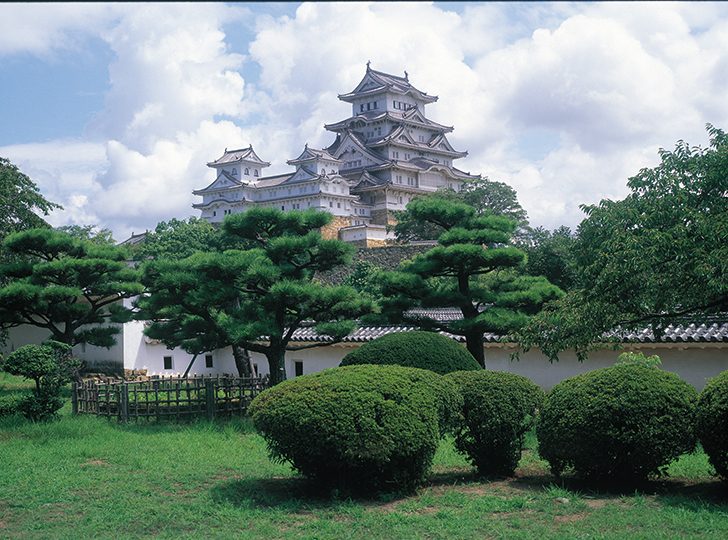

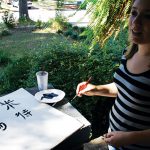

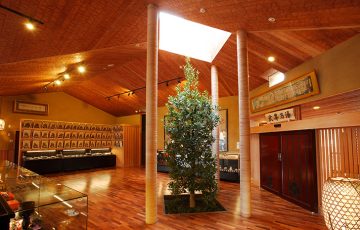
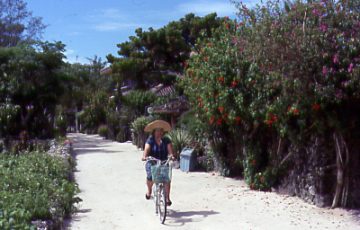

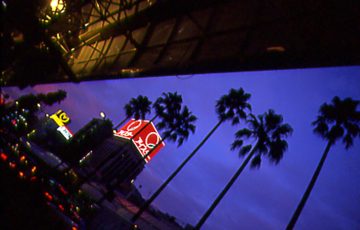

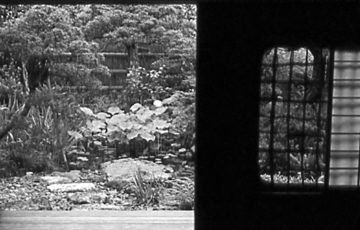
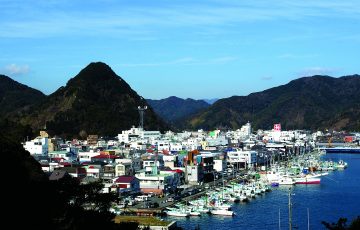
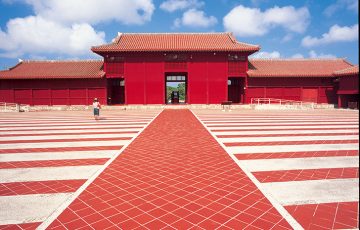


Recent Comments